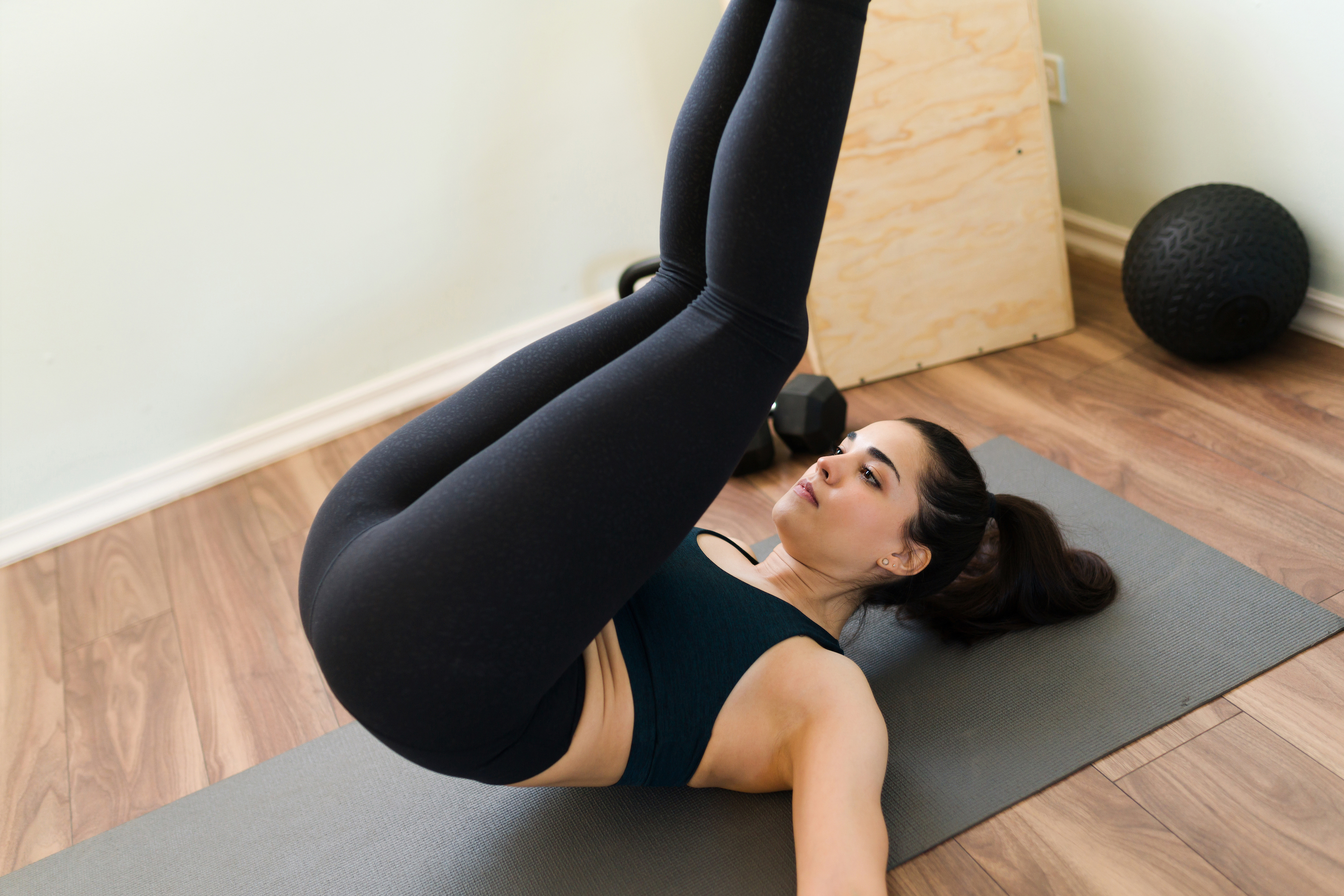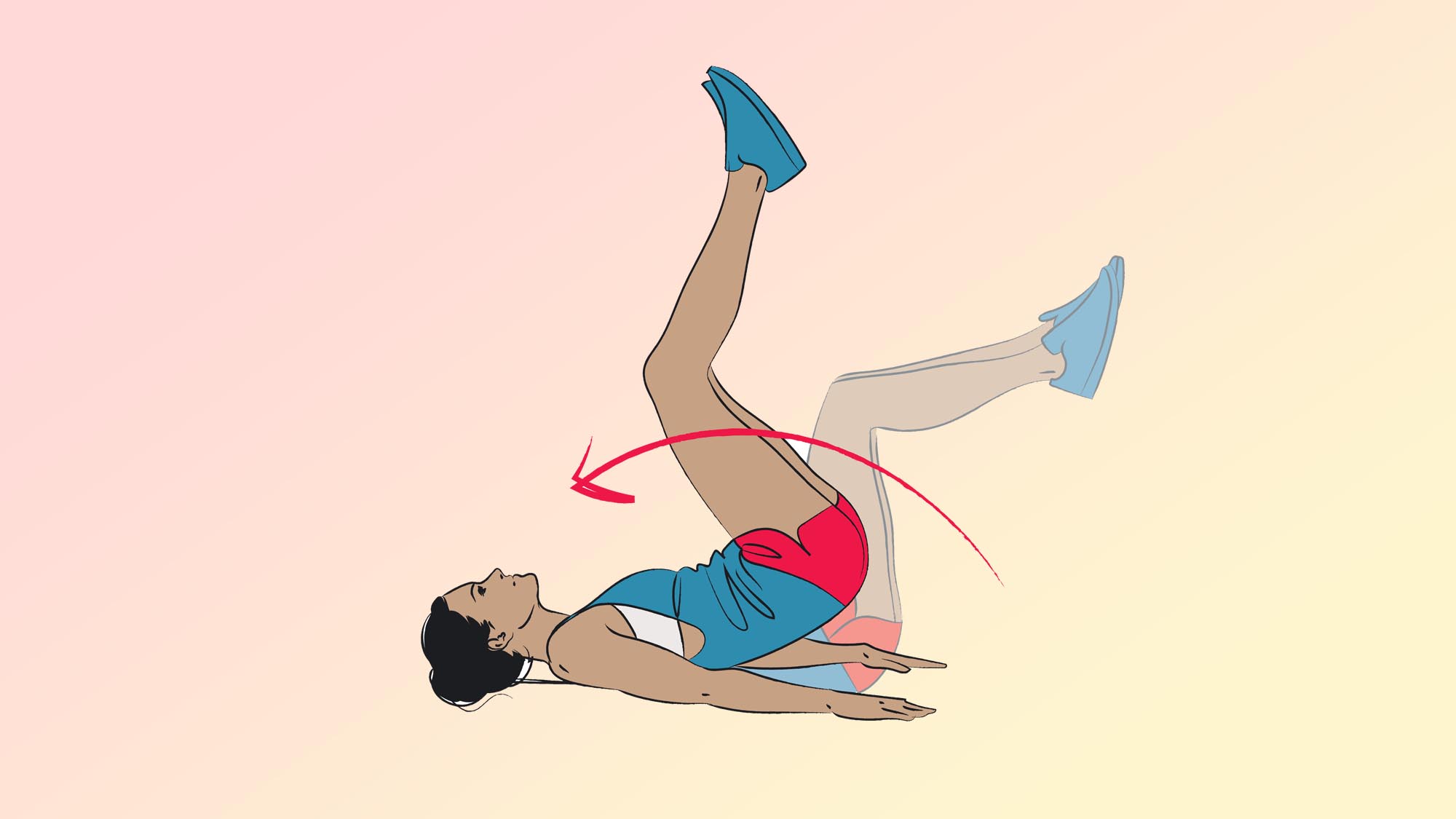How to do a reverse crunch
The reverse crunch is JLo's go-to ab exercise. Here's why.

If you've already nailed crunches, why not learn how to do a reverse crunch? When it comes to #abgoals and sculpting the core of dreams, one woman who tops every list is Jennifer Lopez. But what ab exercises does she use to blast her core? Yep, the reverse crunch.
In an Instagram upload, JLo gave us an insight into one of her brutal gym workouts, and in particular, one of her favorite ab exercises — the reverse crunch. When it comes to working on your core, not all ab exercises are created equal.
One that does get you a lot of bang for your buck, however, is the reverse crunch, which is far better than traditional crunches, or sit-ups, at targeting all of the abdominal muscles. The move is simple when you know how, but also easy to get wrong. Below we detail how to do a reverse crunch with perfect form so that you can benefit from one of the best ab exercises out there. Also check out these lower ab exercises that will fire up your core muscles and build ab definition.
A post shared by Jennifer Lopez (@jlo)
A photo posted by on
Your abs are made up of three major muscle groups — the rectus abdominis, which are the abdominal muscles that run down the front of the stomach, and are the ones that are visible in a ‘six-pack’. The transverse abdominis, which are the deepest abdominal muscles, and the obliques, which run along the side of the torso. Unlike traditional crunches, reverse crunches target the rectus abdominis and the transverse abdominis.
A study published in the American Council on Exercise found that traditional crunches are one of the least effective abdominal exercises you can do. When you crunch, you’re only targeting a very small section of the abdominal wall, plus you’re putting a lot of stress on your neck and spine while doing so. Take a look at four other exercises you shouldn't be doing, and what to do instead.
Here’s everything you need to know about mastering the reverse crunch, and the modifications to try to make the exercise more challenging. Looking for more workout inspiration? We’ve found the best ab workouts you can do for free, the exercise that’s better than squats at building your glutes, and the dumbbell workout with over 1.3 million views.
How to do a reverse crunch
To do a reverse crunch, start by lying on your back, with your lower back, head, and neck pressed into the floor. Bend you legs at the knee, pressing your feet into the mat, and engage your core, thinking about sucking your belly button into your spine.
Sign up to get the BEST of Tom's Guide direct to your inbox.
Get instant access to breaking news, the hottest reviews, great deals and helpful tips.
Keeping your knees bent, inhale, and raise your legs, hips, and bottom off the mat. Pause at the top of the movement, using your core to keep your hips raised off the mat. Your head and neck should stay imprinted on the mat. As you exhale, lower your hips back to the mat. That’s one rep.
Make sure you keep the entire movement slow and controlled. It’s tempting to rock back and forth, using momentum to raise the legs, but this won’t work the abs. If you struggle to get your hips up off the mat, try strengthening your abs using other ab exercises. This is more of an intermediate move.
It’s also important to only lift your hips and bottom from the mat — if you’re getting your entire lower back off the mat, you’re going too far. Be careful to slowly lower back down too, and avoid collapsing back onto the mat.

What muscles are worked during a reverse crunch?
The reverse crunch works the rectus abdominis and the transverse abdominis — in other words the inner core muscles, and the outer, six-pack muscles on the torso. It’s also using just your bodyweight, so you don’t need any additional equipment.
How can you make a reverse crunch more challenging?
Reverse crunches aren’t the easiest ab exercise, so it’s easy to make them more challenging by increasing the number of repetitions you do. That said, if you’re really looking for a challenge, try straightening the legs during a reverse crunch. Alternatively, at the top of the crunch, try rotating to one side, twisting the legs, then alternate from side to side. You can also try putting a medicine ball between your knees and squeezing the ball during the crunch.
Of course, you can also follow in JLo's footsteps and extend your reverse crunch into a dragonfly ab exercise. To do a dragonfly, get into the reverse crunch position, but keep your legs straight and avoid bending at the hips. Point your toes, and slowly lower your legs back down to the bench. If you find you drop your hips or arch your back, stop, and return to reverse crunches until you have built up more core strength.
The benefits of a reverse crunch
Reverse crunches are gentler on the neck and spine than ab exercises like bicycle crunches or traditional crunches, so if you’ve ever experienced neck pain during an ab workout, these are a good alternative.
Building a strong core isn’t just an aesthetic goal — it can help you run faster, lift heavier, and reduce strain on your back. Strong abs can also help improve your posture, balance, and flexibility.
For more, check out how I did reverse crunches every day for a week.

Jane McGuire is Tom's Guide's Fitness editor, which means she looks after everything fitness related - from running gear to yoga mats. An avid runner, Jane has tested and reviewed fitness products for the past five years, so knows what to look for when finding a good running watch or a pair of shorts with pockets big enough for your smartphone. When she's not pounding the pavements, you'll find Jane striding round the Surrey Hills, taking far too many photos of her puppy.
- Sam HopesSenior Fitness Writer, Fitness and Mobility Coach
